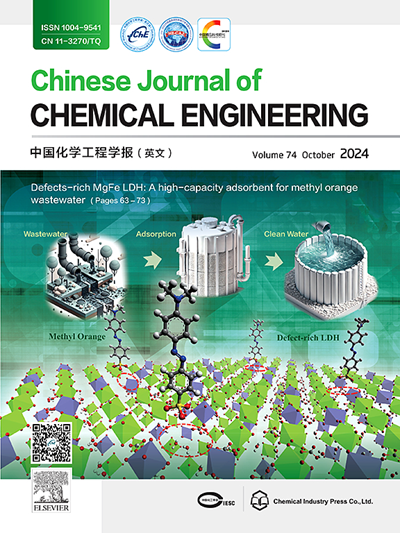One-step synthesis of caged hydrocarbon fuel via photoinduced intramolecular cycloaddition of 5-vinyl-2-norbornene
IF 3.7
3区 工程技术
Q2 ENGINEERING, CHEMICAL
引用次数: 0
Abstract
Photocycloaddition affords opportunities to engage in advanced fuels with high-strained cyclobutyl-containing structures. Herein, the one-step route for the synthesis of high-energy-density caged fuel, tetracyclo [4.2.1.02,5.03,7]nonane (TCN) with high-strained four-membered structure, has been developed via photosensitized [2 + 2] cycloaddition of 5-vinyl-2-norbornene (VNB). The reaction conditions are optimized to obtain a high conversion of VNB of 91.9%. The triplet quenching and Stern-Volmer quenching studies indicate that [2 + 2] photocycloaddition follows the triplet-triplet energy transfer process, and a kinetic model is expressed as a reaction rate equation correlated with the incident light flux. Importantly, the obtained TCN shows a high density of 1.003 g·cm−3 and volumetric net heat of combustion of 42.31 MJ·L−1, which can serve as an excellent high-energy additive for blending with liquid fuels.

光诱导5-乙烯基-2-降冰片烯分子内环加成一步合成笼状碳氢燃料
光环加成为高应变含环丁基结构的先进燃料提供了机会。本文通过5-乙烯基-2-降冰片烯(VNB)的光敏化[2 + 2]环加成,一步合成了具有高应变四元结构的高能量密度笼形燃料四环[4.2.1.02,5.03,7]壬烷(TCN)。优化了反应条件,得到了91.9%的高VNB转化率。三重态猝灭和Stern-Volmer猝灭研究表明,[2 + 2]光环加成遵循三重态-三重态能量传递过程,动力学模型表示为与入射光通量相关的反应速率方程。重要的是,合成的TCN具有1.003 g·cm−3的高密度和42.31 MJ·L−1的体积净燃烧热,可以作为一种高性能的液体燃料添加剂。
本文章由计算机程序翻译,如有差异,请以英文原文为准。
求助全文
约1分钟内获得全文
求助全文
来源期刊

Chinese Journal of Chemical Engineering
工程技术-工程:化工
CiteScore
6.60
自引率
5.30%
发文量
4309
审稿时长
31 days
期刊介绍:
The Chinese Journal of Chemical Engineering (Monthly, started in 1982) is the official journal of the Chemical Industry and Engineering Society of China and published by the Chemical Industry Press Co. Ltd. The aim of the journal is to develop the international exchange of scientific and technical information in the field of chemical engineering. It publishes original research papers that cover the major advancements and achievements in chemical engineering in China as well as some articles from overseas contributors.
The topics of journal include chemical engineering, chemical technology, biochemical engineering, energy and environmental engineering and other relevant fields. Papers are published on the basis of their relevance to theoretical research, practical application or potential uses in the industry as Research Papers, Communications, Reviews and Perspectives. Prominent domestic and overseas chemical experts and scholars have been invited to form an International Advisory Board and the Editorial Committee. It enjoys recognition among Chinese academia and industry as a reliable source of information of what is going on in chemical engineering research, both domestic and abroad.
 求助内容:
求助内容: 应助结果提醒方式:
应助结果提醒方式:


